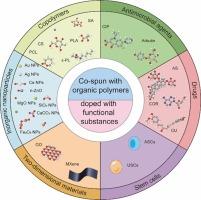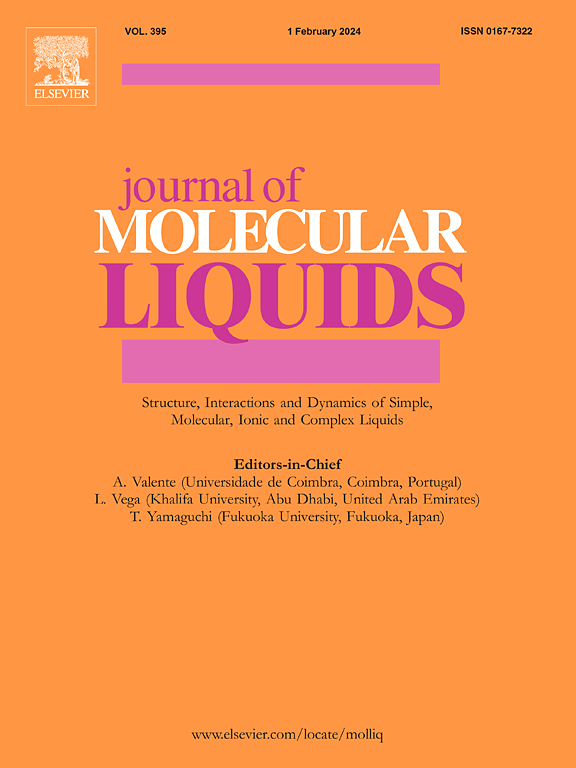用于伤口敷料的明胶基电纺纳米纤维膜的最新进展:综述
IF 5.3
2区 化学
Q2 CHEMISTRY, PHYSICAL
引用次数: 0
摘要
皮肤伤口愈合一直是全世界面临的巨大挑战。作为人体最大的保护屏障,皮肤极易受到各种损伤,导致并发症和死亡率增加。传统的伤口敷料(如绷带、纱布)由于在抗菌性和促进细胞增殖方面的局限性,无法及时有效地促进伤口愈合。近年来,越来越多的新型伤口敷料被开发和研究出来。电纺纳米纤维膜具有高比表面积和高孔隙率,能有效地与外界环境交换空气和水蒸气,形成良好的屏障,并能模拟细胞外基质,促进伤口粘附和血管生成。明胶作为一种天然聚合物,具有良好的生物相容性和生物降解性,因此明胶基电纺伤口敷料纳米纤维膜与人体具有良好的相容性。本文综述了明胶基电纺伤口敷料纳米纤维膜的研究进展,并进行了展望。本文章由计算机程序翻译,如有差异,请以英文原文为准。

Recent progress in gelatin-based electrospun nanofibrous membranes for wound dressings: A Review
Cutaneous wound healing has always been a great challenge worldwide. As the largest protective barrier of the human body, the skin is highly susceptible to a variety of injuries leading to increased complications and mortality. Traditional wound dressings (e.g., bandages, gauze) are not able to promote wound healing in a timely and effective manner due to their limitations in terms of antimicrobial properties and promotion of cell proliferation. In recent years, more and more novel wound dressings have been developed and researched. Electrospun nanofibrous membranes have high specific surface area and high porosity, which can effectively exchange air and water vapor with the external environment to form a good barrier and can mimic the extracellular matrix to promote wound adhesion and angiogenesis. Gelatin as a natural polymer has good biocompatibility and biodegradability, so gelatin-based electrospun wound dressing nanofibrous membranes have good compatibility with the human body. This paper reviews the research progress of gelatin-based electrospun wound dressing nanofibrous membranes and provides an outlook.
求助全文
通过发布文献求助,成功后即可免费获取论文全文。
去求助
来源期刊

Journal of Molecular Liquids
化学-物理:原子、分子和化学物理
CiteScore
10.30
自引率
16.70%
发文量
2597
审稿时长
78 days
期刊介绍:
The journal includes papers in the following areas:
– Simple organic liquids and mixtures
– Ionic liquids
– Surfactant solutions (including micelles and vesicles) and liquid interfaces
– Colloidal solutions and nanoparticles
– Thermotropic and lyotropic liquid crystals
– Ferrofluids
– Water, aqueous solutions and other hydrogen-bonded liquids
– Lubricants, polymer solutions and melts
– Molten metals and salts
– Phase transitions and critical phenomena in liquids and confined fluids
– Self assembly in complex liquids.– Biomolecules in solution
The emphasis is on the molecular (or microscopic) understanding of particular liquids or liquid systems, especially concerning structure, dynamics and intermolecular forces. The experimental techniques used may include:
– Conventional spectroscopy (mid-IR and far-IR, Raman, NMR, etc.)
– Non-linear optics and time resolved spectroscopy (psec, fsec, asec, ISRS, etc.)
– Light scattering (Rayleigh, Brillouin, PCS, etc.)
– Dielectric relaxation
– X-ray and neutron scattering and diffraction.
Experimental studies, computer simulations (MD or MC) and analytical theory will be considered for publication; papers just reporting experimental results that do not contribute to the understanding of the fundamentals of molecular and ionic liquids will not be accepted. Only papers of a non-routine nature and advancing the field will be considered for publication.
 求助内容:
求助内容: 应助结果提醒方式:
应助结果提醒方式:


